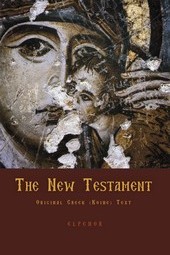On the other hand, when we look at our culture we can say – without too much doubt about this – that we have lost the vertical dimension to a great extent; we always go ahead; we never have time to stand somewhere and to look above and below.
These are two types. Here I give you a system of hierarchies which is completely vertical and has very little horizontal. In order to understand what I mean with making everything transparent for the Divine ground, we should look for a moment at art. The most translucent religious art is the Byzantine mosaics. They don’t want at all to describe anything which happens in the horizontal line; they want to express, in everything which appears on the horizontal level of reality, on the plane of time and space, to make it a symbol pointing to its own depths: the presence of the Divine. This is the great(ness) of the mosaics. There are a few examples of them in the Metropolitan Museum, which you should look at. There you have the expression of Divine transcendence, even if the subjects are completely earthly – animals, trees, men of politics, women of the court. Every expression has its ultimate symbolic meaning, and therefore. . . the last great fight in the Byzantine church was a fight about pictures, because the Byzantine culture believed in the power of pictures to express the Divine ground of things. And the danger was very great that the popular belief would confuse the transparency of the pictures with the power of the Divine itself, which is effective through the pictures, but which is never identical with them. And the whole fight, especially coming from the West against the East, and on the other hand coming from Mohammedanism against the East, was a fight about the meaning of the transparent power of the pictures. For the East, this was essential and still is; therefore most of the great art came from there and then conquered the West. But from the West the danger was so great that after Rome partly capitulated, it finally was attacked again by Protestantism, especially Reformed Protestantism, in a way which removed the pictures from the churches again. Therefore in Calvinism natural objects have lost their transparency – -that is the meaning of all iconoclastic (image-destroying) movements. You can understand this when they saw the superstitious way in which many Catholics prayed to their pictures, etc… But when you understand what else was thrown out in the same act, then you are not so sure about it – -namely, that natural objects have lost their transparency: they are simply objects of technical activity, and nature became de-divinized, its Divine character, its representative character for the Divine, became lost. This is part of the whole problem. So we can say that what the Byzantine culture effected was the spiritualization of all reality. Please don’t: confuse that with idealization –that is something quite different. Idealization is the picture of Hoffman’s in Riverside Church, an idealized Jesus. A Byzantine Jesus is a transparent and never idealized Jesus. There is the Divine majesty which is visible throughout, but not a nice human being with ideal, manly handsomeness.


